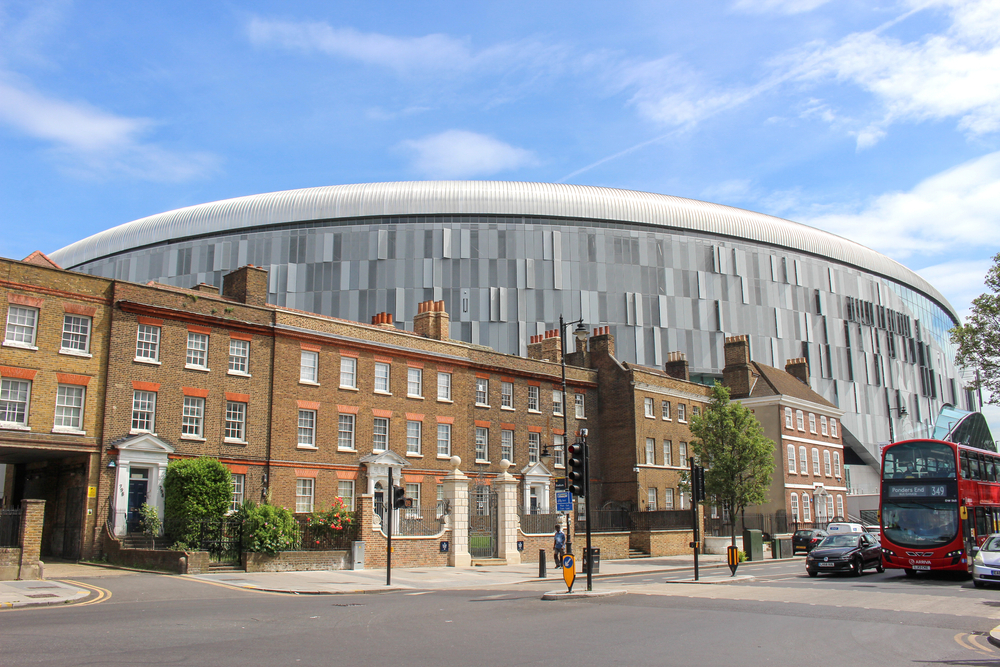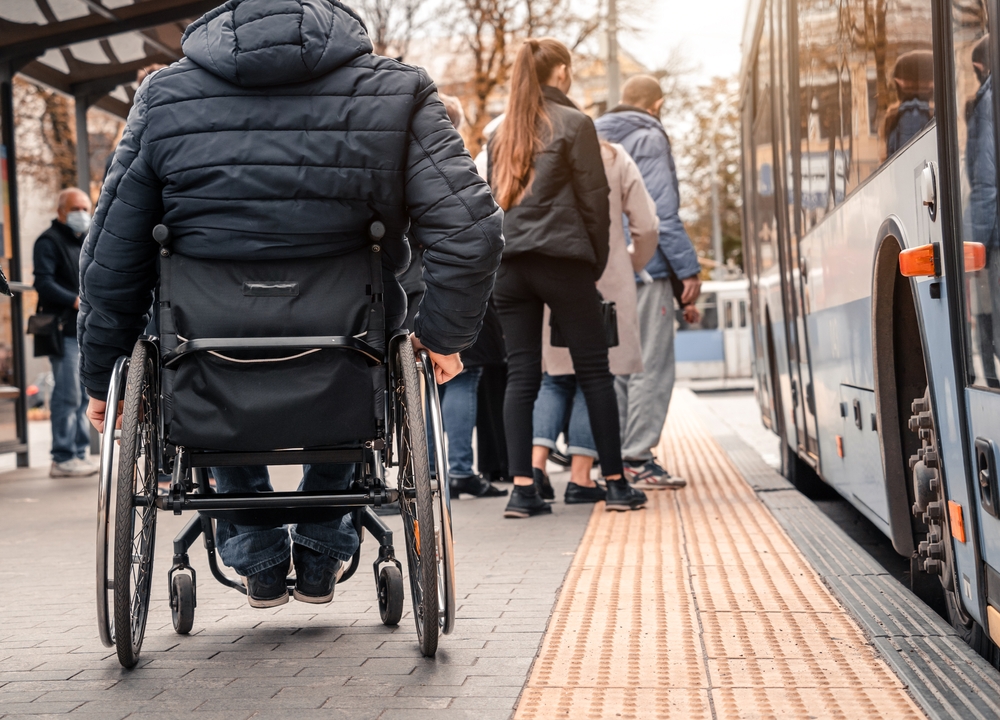Experience design: a blueprint for a successful stadium development
In the dynamic realm where sport, entertainment, technology and architecture intersect, the evolution of stadium design has transformed from mere structures into immersive experiences. From exhilarating matches, to pulsating concerts, and those unforgettable moments, modern stadiums are living, breathing, memory-making entities, with an opportunity to captivate and engage the wider communities they inhabit.
In this blog, we discuss collaborative design methods that go beyond architectural aesthetics and consider the broader context of user experience, a more human-centred approach to the integration of technology and community.
As stadiums evolve into multifaceted hubs of activity, experiential design becomes an indispensable tool for creating spaces that build a lasting impact on both fans and their communities. So, how might we create memorable and immersive experiences from the crucial ‘last mile’ around the new development, to the moment the decision is made to step foot in the community?

Who are your stakeholders really?
The creation of a world-class stadium is a multifaceted venture that requires a strategic vision and a deep understanding of the needs of stakeholders, from fans, to loyal customers and all members of the local community. Whether you're a city planner, a team owner, or an ambitious local entrepreneur, developing a stadium demands a comprehensive blueprint that needs to be developed with a wider set of voices and experiences. While this can initially seem to slow up the process having more voices involved, a critical element of this is having a clear idea of your wider stakeholders concerns, ambitions and desires.
What is their need state and what will be the drivers to integrate all of these passionate people behind a collective vision?
Successful stadium developments require collaboration and input from various local government roles. The much-needed potential investors, the community members, local groups that often don’t get a voice at the table which might include those with lived-experience of impairments and disability. If we could spend more time meeting, listening and feeling what the new stadium development will do beyond the opening day. Let’s try to imagine how the development will affect the spaces and people 1,000 days into the new build, and what would it feel like to be around pre, during and post event.
At the consultation stage, there's a great opportunity to help define what that experience could be not only mean commercially, but from a deeper community aspect. Community support is crucial for the long-term success of the stadium as it can positively impact fan support and wider public opinion. It has the potential to help reframe funding opportunities, affect overall project sustainability, and wider integration into the community beyond the numbers in a spreadsheet.
How might we integrate local small businesses and shop owners further into the process and say; these are the types of numbers that we're thinking for a typical match day, 'we're going to be closing off the roads'. How does that affect your business and how can we work in tandem to make sure the new pressures on the community are a positive one? This is true not only in close proximity to the stadium but across the wider city or town as they host the events across the year.
How do we keep the local interest and movement going around the community between each home game? When you have a new stadium that has been upgraded to increase capacity, this then places pressures on the local businesses around the venue. They see the value in increased numbers of people using the local amenities, however, they are not always ‘match-fit’ or have the support for the necessary improvements needed to create the desired experience we look for at such events - longer queues as a result of the higher visitor numbers, is one example.
The focus with local independent retailers, as one example, can certainly take time to test, and develop with them what can be changed, and how their service offer might increase or flex. This is one small element that could help shape the longevity of the community footprint, and where we might begin to see multiple returns beyond the match day experience.
So, closely collaborating with all local businesses is one vital step to making sure the whole community is prepared for the new or revitalised stadium.

Innovation through incubation
A further opportunity for sporting arenas and new, mixed-use developments is to become catalysts for attracting a wider industry footprint to help foster conversations and support the entrepreneurial spirit within a community. It’s worth noting that we’re not just talking about economic regeneration by attracting not just the larger industry organisations, but stimulating micro businesses as well, by supporting them to get off the ground and generating wider community benefits. These will naturally extend through opportunities from social, environmental and economic regeneration that go beyond the seasonality of the games. How can we foster micro-innovation areas that introduce technologies to new areas of growth? These micro-innovation areas could include augmented content, machine learning and generative systems to inclusive and accessible digital platforms, all further enabled by connected data, systems and services. The control of this data and how we create wider situational awareness, in harmony with technology, is one to foster and incubate locally.
Transportation and accessibility
Furthermore, this positive impact around sharing data, might be impeded without the potential to rethink how a more cohesive multi-modal transportation plan could help active the redevelopment beyond the match day experience. Existing infrastructures should be evaluated in tandem with collaborating with local authorities to develop a comprehensive transportation and data strategy. This may include a well-connected public transit option, more sustainable parking patterns and facilities, safer pedestrian and bicycle-friendly pathways and walkways, with prioritisation for those visitors with inclusive and accessible needs. These could be extended to car-sharing options, electric bikes and scooters, but could also make commercial sense to factor in smarter logistic and delivery systems, to not congest the crucial last mile.

Sustainable and green initiatives
Integrating sustainable practices into stadium development is fundamental to its success. While exploring eco-friendly construction materials, energy-efficient systems, and waste reduction strategies, we know the value of spending more time in green spaces, that will invite footfall and dwell time in equal measure if planned well. The options for renewable energy sources, water conservation, upcycling and repurposing of waste materials from match day can all add to minimise the stadium's ecological footprint. Environmental consideration needs to go further and much deeper across the systems and services, but is very rarely heard of when you talk about sports and stadia; what's the longevity of this new space? What else is it supporting? How is it supporting clean air initiatives and supporting greywater usage, for example? How is it educating people about waste product recycling pre and post-match?
The crucial last mile
There’s definitely been a shift towards creating more personal memories and experiences with families and friends over the past few years, and the last mile for the stadium is an opportunity to amplify those positive experiences. The last mile potentially holds, within this area, the ingredients to make or break the event that fans are attending. It can create anxiety and confusion where we haven’t harnessed the power of designing the experience from inception to reception, like sharing pre-match data for visitors, blending transport availability alongside F&B availability. It would be good to see data across billboards, parking lots, shopping malls, that better connects those wanting to avoid the match-day area, so thinking more than a road closure sign and placing community over the commercial bottom line.
The ease at which you can move people through the last mile in an interconnected space that points them towards personal services, available at a time of their choosing, will create happier fans and visitors. This can help to increase dwell times pre and post-match. By talking to local businesses to develop those personal last mile offers, you can connect fans to a part of the evolving community framework. If there isn’t careful last mile experiential design mapped onto this pre and post-match moment, we potentially lose the possibility of people wanting to return earlier and dwell longer in the last mile zone.
Parallel technology
Across our projects at Mima, we like to step back and draw parallels from other industries to see how trends and innovations from one sector can positively influence another. One such example is the study of pedestrian flow in airports where mapping the interior dwell zones, lounges and gates, placed in a digital twin can help through a simulation process, to test and monitor how people moving and stopping, alongside understanding the operational and commercial teams view of these spaces, can develop a far more efficient space all together.
When you start to look at that information in a more immersive way with a team of commercial and community filters, it opens up new perspectives. Adding elements of virtual and augmented reality with real-time user testing enables you to have a powerful, experiential platform to test, iterate and prove your community stadium design.
Placemaking and accessibility
Navigating a large stadium can be challenging, especially for first-time visitors and for those with accessibility needs. Experiential design can address this by incorporating clear wayfinding and placemaking signage, which might include, for example; interactive maps, connected to our transport of choice, but with personalised routes in and out of the stadium, to enhance accessibility. This ensures that fans can easily find their seats without the added pressure of running late, managing time and access to the amenities, and other key locations within the stadium. If we can reduce the confusion and enhance the overall experience we know this creates a better all round model of commercial and community relations. A stadium that prioritises accessibility and wayfinding is likely to build a positive reputation in the community and that in turn can lead to increased support from fans, sponsors, and the local community. When stadiums prioritise accessibility and a more inclusive view on services, they open their doors to a broader audience.
The long now
If you want to think about the long-term benefits, you have to go beyond the idea of each generation and that's where the idea of supporting the community is such a powerful one. Wouldn't it be excellent to see a redevelopment of a football stadium, as one example, that doesn’t just see the commercial value in how much you can increasingly charge per head, per seat, across the next decade, but how many small businesses it can help support and build in parallel as a result of its longer term existence? What are we building in the long-term? What's the community value? What does it need today and what will it need tomorrow? That is a real legacy.
Let's start getting smarter about the types of things that we want to bring to enable inter-generational communities where sport is a catalyst for wellbeing, the verbal, the visual, the local value.
It's not just the younger generations, it's also the older generations. How do you want to make these places more accessible? So, people in their 60s, 70s, and 80s can still enjoy the stadium experience, with last mile comfort, ease of use and access for all.
Creating the blueprint for all of the above will need patience, persistence and time to evolve the stadium development project. It will require a holistic approach that balances economic viability, community engagement, architectural excellence, sustainability, and fan engagement and community experience, all played out with a healthy dose of passion. By conducting thorough feasibility studies, engaging stakeholders, prioritising sustainable initiatives and focusing on accessibility, you can set the stage for a successful stadium that becomes a source of pride for the community and a hub of excitement for sports enthusiasts and local businesses alike.